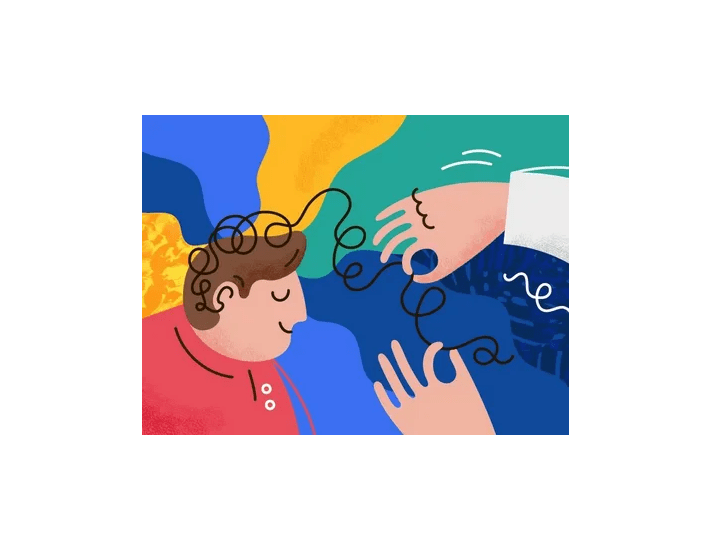There is no doubt that all the powerful brands have strong logos. The best examples are Apple, Nike, and Amazon. Thinking of these brands, you can immediately imagine their logos without any effort. And yes, we all can agree that these iconic logos didn’t become popular overnight.
Each brand worked hard and smartly to build meaningful connections with its customers and within its industries. Making thoughtful branding decisions and having strong logo designs has helped these brands get attention, trigger emotions, and encourage their target audiences to purchase the products they offer.
This is why we have come up with this blog to help you understand the psychology of logo designs and how professional logo design services can impact your website’s user behavior.
Power Of Simplicity In Logo Design
A logo with lots of white space, simple components, and clean lines can improve the cognitive processing experience of users.
A study that appeared in the Journal of Consumer Psychology found that people have eaten a lot more chocolates from boxes that included a flat, plain logo than from ones that featured a complicated, three-dimensional logo.
The survey also revealed that in contrast to prominent companies, simple brand logos have enhanced the consumption of non-prestigious goods. Simple, understated designs are more aesthetically acceptable to the human brain. Basic logo designs are made using the Gestalt principle, which is a psychological concept.
This means that even if a logo is composed of several smaller elements, our brain interprets it as a whole image when we view it. It’s similar to how a puzzle appears to have only one picture when all the parts are placed together. Faster visual processing and enhanced memorability result from this.
Impact Of Colors And Shapes
For customers, colors can elicit immediate emotional responses and associations. Having said that, here is how impacts and shapes can impact your logo designs:
On the one hand, the blue color typically indicates security, intelligence, stability, and trust.
Green logos conjure images of tranquillity, health, freshness, and the outdoors. Additionally, red logo designs convey aggressiveness, energy, urgency, and intensity.
In comparison to vague, abstract logo designs, descriptive logos with shapes and visual signals that clearly communicate the category or nature of the product generate significantly more positive consumer perceptions of the brand.
Additionally, customers may not be aware of the underlying psychological significance associated with geometric shapes, but they do. Circles and ovals, for instance, are used to represent regularity, wholeness, relationships, and community. Logos that are square or rectangular stand for perseverance, professionalism, strength, and honesty.
Triangle-shaped logos can represent movement, confrontation, action, tension, or advancement. A fundamental element of an affordable logo design is the use of shapes that are appropriate for the brand promise and persona. Several studies have demonstrated that consumers perceive firms with informational, evocative logos as being more approachable, real, and honest.
When compared to abstract logos, they have a beneficial effect on consumers’ product ratings, eagerness to purchase, and overall sales volumes. It is easy to grasp and benefit a brand when consumers can instantly determine what it offers just by looking at its emblem.
The Role Of Familiarity And Repetition
Psychology claims that the mere exposure effect might lead to increased familiarity and liking after repeated exposure to a basic logo design. This implies that consumers will unconsciously choose one brand over another, even if they have the same characteristics and quality of goods, because of the familiarity that a brand has ingrained in their memory from repeated exposures, even if they are unable to recollect seeing the logo in question.
Using the company logo consistently across all brand touchpoints, such as websites, mobile applications, product packaging, commercials, social media, corporate stationery, invoicing, and uniforms, strongly reinforces the brand image in the minds of the audience.
Customers are more likely to trust and like a company that has maintained a consistent, uncomplicated aesthetic over time.
Balance Between Timelessness And Trendiness
Brands may become more relatable and up-to-date by utilizing fashionable logo designs like minimalism, flat aesthetics, and significant symbols. They must exercise caution, though, and avoid creating something that will become popular quickly.
However, they must exercise caution, though, and avoid creating something that will become popular quickly. While trendy logos could draw attention right away, they also run the risk of quickly becoming outdated. Conversely, timeless logos emphasize uncomplicated, enduring design components that hold their aesthetic value over time. Finding this ideal mix requires designing a logo that is both modern and timeless.
While trendy logos could draw attention right away, they also run the risk of quickly becoming outdated. Conversely, timeless logos emphasize uncomplicated, enduring design components that hold their aesthetic value over time. Finding this ideal mix requires designing a logo that is both modern and timeless.
Factors To Avoid When Creating A Logo Design
Although a logo should be simple yet impactful, the following are some pitfalls to take care of:
- Eliminating essential design elements can make your brand’s logo indistinct and generic, which will not make it a memorable logo.
- Making sure to use the right colors, shapes, and icons is highly important. The wrong ones can affect your brand’s values and authenticity.
- Oversimplifying a logo might destroy the equity and legacy that a brand has built over time.
- Rather than inspiring creativity, copying components from pre-existing logos can come across as unimaginative.
- Creating a vector version of a logo when it’s not essential might take away from its organic, human feel and make it appear overly cold and exact.
Conclusion
When it comes to influencing the target audience of a brand, the logo is one of the most important touch points to predict peoples’ perceptions and reactions. It takes a skilled blend of familiarity, colour psychology, simplicity, and traditional appeal to create memorable and unique logo designs. As technology transforms marketing opportunities, organizations must remain adaptable without compromising their essential visual character.

